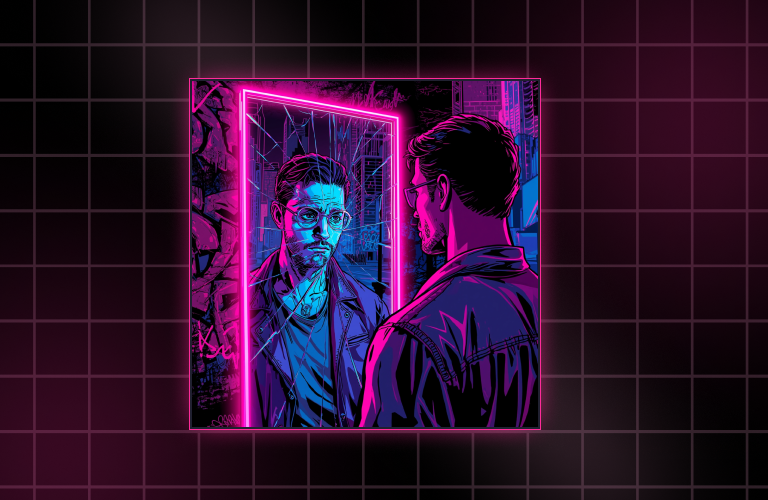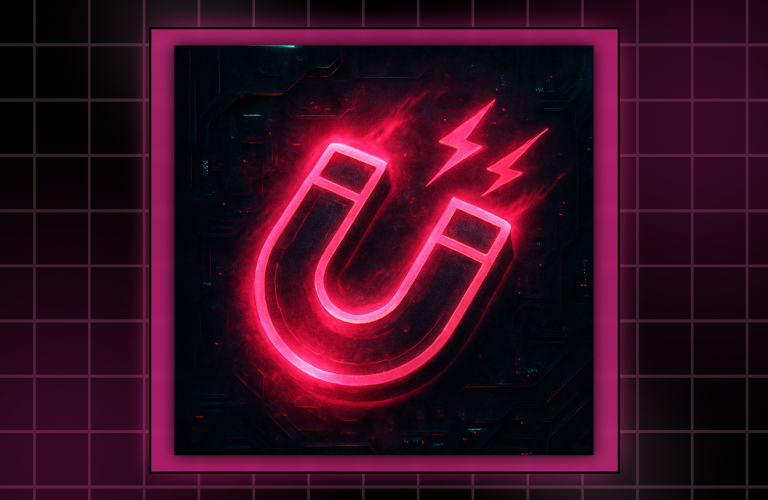.png)
Alchemize Your Digital Presence With a Visual Identity.
Welcome to the art of digital alchemy.
The ancient alchemists sought to transmute base metals into gold.
The modern day digital alchemists transmute the mundane into magnificence by creating magnetic visual identities.
They extract the essence of a brand and transform it into alluring visuals.
From generic to distinct, the brand transforms.
The visual identity plays a powerful role in branding, yet people often overlook it.
“A picture is worth a thousand words.”
The visual identity is the look and feel of the brand and is used to create an emotional impression.
In fact, emotions drive our decision-making.
There are other benefits to having a (strong) visual identity as well:
- Increase brand recognition: by consistent use of logo, font, colors, and imagery, your brand becomes instantly recognizable.
- Brand consistency: a strong visual identity creates clear guidelines for presenting the brand across all platforms and touchpoints. Reinforces the brand message and values.
- Brand differentiation: a strong visual identity helps your brand stand out from competitors and communicates its unique personality and values. Attracts new clients/customers.
- Emotional connection with audience: Visuals can evoke certain emotions which help connect with the audience on deeper levels. It attracts those who resonate with your vibe. Positive emotions strengthen the emotional bond between the brand and audience.
But how does the process unfold?
How does the digital alchemist turn the raw materials into branding gold?
They follow the alchemical process, of course, moving through the transformative stages of nigredo, albedo, and rubedo.
The Alchemical Process - Nigredo (Black)

The first stage is Nigredo. The stage of darkness & dissolution.
This marks the first step in creating a visual identity—the recognition of the need for change.
Much like the alchemical process of burning away impurities, the digital alchemist burns away what is no longer in resonance with the brand.
This is the recognition of inconsistencies in branding and/or the need to re-brand.
This is where the digital alchemist dives deep into the essence of a brand and gains clarity on the brand identity.
It is a process of discovery.
Before you can even create a visual identity, you must have clarity on the brand identity.
Brand identity = personality of a brand.
Visual identity = visual representation of that personality.
To understand the personality of a brand, you must answer these:
- Mission: what mission are you on? What is your purpose? Your objective?
- Vision: The brand’s concept of the future. What is it you hope to achieve?
- Values: Straightforward. What are your values? You’ll likely attract an audience with similar values.
- Feelings: What feelings do you want your brand to convey to the audience?
- Voice: In what tone of voice does the brand speak? Playful and fun? Serious and matter-of-fact?
These all combine to create the brand identity.
Don’t trip if you feel like you don’t have it all figured out. I didn’t have it all figured out when I started (and still don’t). You evolve and so will your brand.
The Alchemical Process — Albedo (White)

The digital alchemist then moves onto the second stage, Albedo. The stage of purification.
Clarity and illumination is born from the previous stage.
At this stage, the digital alchemist uses design principles to blend colors, typography, and imagery to capture the essence of the brand and create the visual identity.
One must understand design principles: (hierarchy, typography, color theory, etc. Or hire a designer.)
Color:
Let’s dive into color.
Colors speak to our emotions and emotions drive our decisions.
If you look into color psychology and branding, you will get simplified meanings for each color.
Things like blue = trustworthy.
While there may be some truth to these statements, they are overly simplified, in my opinion.
For example, often you’ll see purple associated with royalty and luxury.
But Taco Bell uses purple…
Is Taco Bell a high-end luxury brand?
Nah.
There’s more to it.
Let’s think about it like this…
When picking a color:
- What other colors are associated with the brand?
- What are the brand assets and imagery?
- What typography is used?
All of it is playing off of each other to create an emotional impression.
The shade of the color matters too.
You get a different feeling from a deep navy blue than from a royal blue. Dark red is a different vibe from a bold red.
Take my brand, for example.
Pink is often described as nurturing and feminine.
But is that the vibe you get from my website?


Nah, right?
Because it’s a fireberry pink that plays with a cyberpunk blue and cybermint green.
Because the imagery of my website is cool, fun, and energetic.
Because I use a futuristic cyberpunk style font for these newsletters.
Because the grid in the background gives a video game vibe.
Because the theme is ‘Life is a Video Game.’
Because I drew inspiration from one of my favorite video games, Grand Theft Auto. 🤫 (I mean, this game is probably one of the least nurturing and feminine games you could think of.)

These design choices come together to play a beautiful and harmonious symphony.
The cut and dry meanings are overly simplified.
What matters more is how you play the colors.
Take a piano, for example.
The way the piano is played in a Dr. Dre song (‘Still D.R.E.’) gives a different vibe the way it’s played in a Mozart song.
It’s played a specific way in ‘Still D.R.E’ and there are other elements that contribute to the overall feel of the song.
The drums, the bass, etc.

This is the way I see it:
Designing a visual identity is equivalent to producing a song. Designing is orchestrating the symphony and evoking certain emotions. Every choice plays off of the other to create a masterpiece.
Typography
Typography also contributes to the overall look and feel of a brand.
Let’s take my brand as an example again.
Check below.
The font I use for headings is above. A random font is at the bottom.

Gives a totally different feel, yeah?
The bottom font feels more quirky and less serious.
If I changed all the headlines on my website to match that font, it would give you an entirely different feel.
Check it out on my website just for fun:

It feels off.
It doesn’t fit the more futuristic vibe I’m going for.
There are other design principles, such as hierarchy and contrast. I won’t dive into those in this piece.
But they will be important when creating content for your brand and/or building the website.
The Alchemical Process - Rubedo (Red)

The final stage of the alchemical process. The stage of integration.
All purified elements are brought together to create a unified whole.
The colors, typography, and imagery are synthesized into a cohesive visual identity.
The digital alchemist keeps all notes in a unified brand style guide.
The brand style guide helps keep everything consistent across all touchpoints and platforms.
Here’s some pages from my brand style guide:


It keeps everything organized and in alignment.
Now you’re off to the races with your visual identity.
Need a designer to streamline the process? Contact me on Twitter (X) for brand and web design services. (Or click here to get started.)
I hope you found this useful.
—Priscilla [Player 2]


.png)

.png)




.png)













.png)

